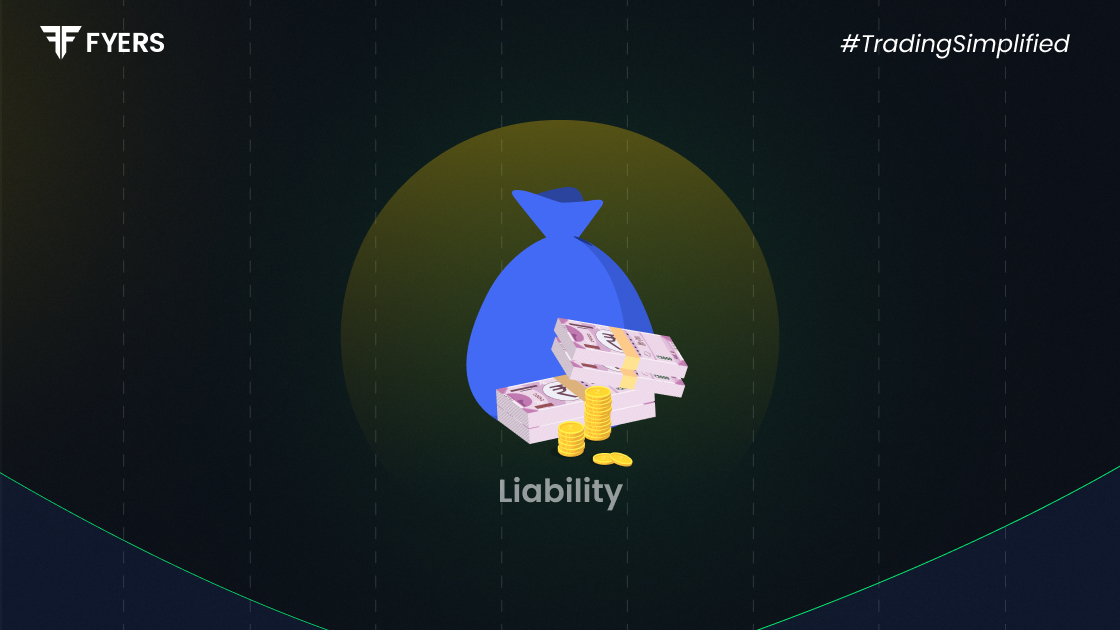

 23 May, 2025
23 May, 2025
 4 mins read
4 mins read

Liabilities play a key role in every business and personal financial life. When you know what a liability is, you can make better money choices. In this article, we will understand what liability is, examples of liability, and the difference between liabilities vs assets.
A liability is money, goods, or services that you owe to someone else. Simply put, it is something you must pay back in the future. For example, if you avail a loan from a bank, you have a liability to repay that amount.
In business records, liabilities appear on the right side of a balance sheet. Assets (what you own) show up on the left side. Companies face liabilities when they borrow money or buy items on credit.
Liabilities are financial duties that you must handle over time. For businesses, liabilities allow them to buy goods without paying right away. They can borrow funds to grow or run daily tasks on credit.
For instance, when a company buys raw materials on credit, it creates an accounts payable liability. You settle liabilities by giving money, goods, or services to the person or business you owe.
There are several kinds of liabilities in both business and personal finance:
These must be paid within 12 months. You face these liabilities in business or home finances. They include accounts payable when you buy on credit, short-term loans for quick cash needs, unpaid bills for services you've used, wages owed to workers, and credit card debt from recent purchases.
These are due after one year. Long-term loans help you buy big items over many years. Bonds payable are when a company borrows money from the general public. Deferred tax liabilities are taxes you'll pay later. Long lease deals commit you to pay for space or equipment for several years.
On the personal finance front, long-term loans like home loans and car loans are generally considered long-term liabilities.
These might arise based on what happens in the future. They depend on uncertain events. Lawsuits can lead to costs if you lose in court. Loan guarantees mean you'll pay someone else's debt if they can't. Product warranties require you to fix broken items. Tax disputes might result in extra payments.
These are costs you've taken on but haven't paid yet. Interest on loans builds up each day before your payment is due. Staff pay adds up as workers provide service before payday. Utility costs grow as you use services before the bill arrives. No invoice exists yet, unlike accounts payable.
These relate to company ownership. Dividends payable are profits promised to shareholders but not yet distributed. Stock redemption funds are set aside to buy back shares. Paid-in capital is money invested by shareholders. These show your duty to the people who own your business.
Here are some common liabilities you might face in business or personal finance:
Bank loans are funds you borrow from a bank. You must pay these back with an added component called interest.
Creditors are amounts you owe to those who supply goods or services on credit.
Accounts payable are bills for items or services you've already received but have not paid for.
Outstanding expenses include unpaid wages, rent, or utility bills that you still need to pay.
Mortgages are loans to buy property. You pay these over many years.
Accrued expenses are costs like interest or taxes that you've taken on but not yet paid.
|
Aspect |
Liabilities |
Assets |
|---|---|---|
|
Meaning |
What you owe (debts, duties). |
What you own (resources, value). |
|
Balance Sheet |
It is shown on the right side. |
It is shown on the left side. |
|
Examples |
Loans, bills, accounts payable. |
Cash, property, inventory. |
|
Impact |
It reduces your net worth. |
It increases your net worth. |
|
Settlement |
Must be paid off in future. |
Can be used/sold for cash. |
Create a Budget: Plan your monthly spending and include debt payments. This helps you know how much you can pay towards what you owe.
Pay the Most Important First: Focus on high-interest debts first. This saves you money in the long run by reducing extra charges.
Use Debt Payoff Plans: With the snowball method, pay small debts first for quick wins. The avalanche approach tackles high-interest debts to save money.
Think About Debt Consolidation: Combine several loans into one payment. You might get a lower rate and simplify your monthly bills.
Check Often: Review your debts monthly. Adjust your payment plan when your income or expenses change to stay on track.
Avoid Needless Debt: Borrow only for true needs, not wants. Make sure you can make payments before taking on new debt.
Liabilities are a vital part of any business or personal finance plan. When you know what a liability is and how it works, you can make smarter choices. Good liability control is key to long-term success, whether for your business or home budget.
A liability is something you owe to another person or business. It could be a loan, an unpaid bill, or any duty that you need to handle later.
The main types are current liabilities (due within one year), non-current liabilities (due after one year), contingent liabilities (depend on future events), and accrued liabilities (costs you've taken on but not paid yet).
Yes, you can insure against liability. For example, you can take out an insurance policy on your home loan. In the event of an emergency, such as the borrower's death, the insurance company will assume responsibility for repaying the loan.
Calculate your Net P&L after deducting all the charges like Tax, Brokerage, etc.
Find your required margin.
Calculate the average price you paid for a stock and determine your total cost.
Estimate your investment growth. Calculate potential returns on one-time investments.
Forecast your investment returns. Understand potential growth with regular contributions.